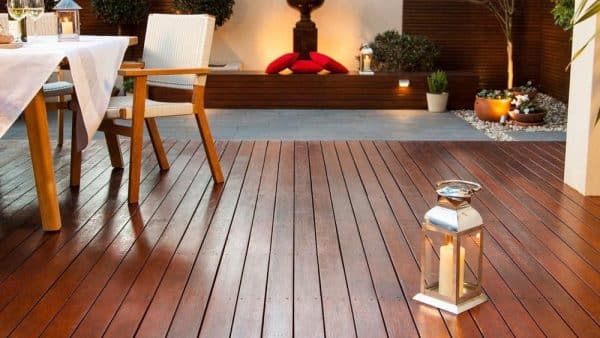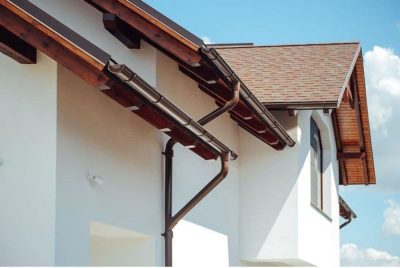
Mold is the sneakiest troublemaker in homes, quietly slipping in and causing chaos before you even notice. This crafty fungus loves hanging out in damp, humid spots, making it a frequent guest in areas with water issues or poor airflow. Whether it’s the infamous black mold or the less showy green or white versions, it’s more than just an eyesore – it’s a health hazard too. It can mess with your breathing and stir up allergies, affecting everyone in the house. This article dives into the not-so-pretty side of mold, focusing on how to stop it before it starts. Join us in creating a shield for your home against this unseen foe, ensuring your space stays safe and sound for you and your loved ones.
What causes mold to grow?
Mold can grow due to the following reasons:
Persistent Moisture: Leaky Roofs and Pipes
Mold finds its haven where moisture persists, and leaky roofs or pipes act as primary contributors. Unattended drips and leaks foster a damp environment, offering an ideal breeding ground for mold to establish and propagate.
Ventilation Woes: Inadequate Air Circulation
Insufficient ventilation transforms your home into a favorable environment for mold growth. Areas with limited airflow, such as basements or attics, become stagnant, providing optimal conditions for mold proliferation. Ensuring proper ventilation is crucial to mitigating this risk.
Humidity Woes: Excessive Moisture Woes
Mold thrives in environments with high humidity. Spaces like bathrooms or kitchens, characterized by consistently elevated moisture levels, become hotspots for its growth. Regularly monitoring and managing humidity levels are essential in the discouraging mold infestation.
Overlooked Corners: Neglected and Hidden Spaces
Mold is adept at thriving in spaces that often go unnoticed, such as closets, tucked-away corners, and dark areas. Neglected nooks provide an undisturbed breeding ground for mold, emphasizing the need for comprehensive inspections.
Water Damage Fallout: Aftermath of Floods or Leaks
Floods or undetected leaks leave behind conditions that are conducive to mold growth. Swift and thorough intervention is imperative if your home experiences water damage to prevent mold from taking hold and spreading.
How long does it take for mold to grow after a flood?
After a flood or water leakage, the timeline for mold growth can be a cause for concern. According to the Centers for Disease Control and Prevention (CDC) and the Environmental Protection Agency (EPA), mold can begin to grow within 24 to 48 hours after a flood or significant water event. This rapid onset underscores the urgency of taking immediate action to mitigate water damage and prevent mold from gaining a foothold.
The moisture-laden conditions create an ideal environment for mold spores to germinate and proliferate. As the clock ticks, the likelihood of mold growth increases exponentially. It’s essential to promptly address water-related issues, such as drying and disinfecting affected areas, to curb the risk of mold infestation.
The CDC and EPA recommend swift intervention, emphasizing that the early hours are critical in preventing extensive mold development. The mold not only poses a threat to property integrity but also poses health risks, with exposure potentially leading to respiratory issues and allergies. Therefore, homeowners and property managers are strongly advised to prioritize rapid and thorough responses to water damage to safeguard both their homes and the well-being of occupants.
Why mold is bad for your home?
Mold is harmful for several reasons that are easy to understand:
- Health Impact: Mold exposure can lead to allergies, respiratory problems, and irritation when spores are inhaled.
- Structural Damage: Mold can compromise the integrity of your home by consuming surfaces like wood and drywall, weakening the structure.
- Aesthetic Concerns: Mold leaves unsightly stains on walls and ceilings, diminishing the visual appeal of living spaces.
- Rapid Spread: Mold reproduces through airborne spores, facilitating its quick spread to new areas and making containment challenging.
- Financial and Time Costs: Removing mold is a costly and time-consuming process, often requiring professional intervention and causing inconvenience.
How can you prevent mold from growing?
It is more easy and more important to prevent mold before it grows because it can save a lot of effort and money.
Stay Dry, Stay Mold-Free
Think of mold as a fan of damp places. So, keep your home dry! Fix leaks ASAP – whether it’s a tiny drip from a roof or a sneaky pipe. Make sure places like bathrooms and kitchens get some air circulation – a good exhaust fan can do wonders.
Spot Checks for Peace of Mind
Imagine giving your home a little check-up. Look around for leaks, especially in places like basements and attics. Mold likes to hide in corners, so don’t forget to peek into those less-trodden spots. Catching any issues early on is like a superhero move against mold.
Let the Breeze In
Mold hates fresh air. Let it in by opening windows and doors whenever you can. If your bathroom gets steamy or your kitchen gets a bit too cozy, throw in an exhaust fan to keep things breezy.
Drain Away Worries
Make sure water knows its way out! Clean those gutters, so rainwater doesn’t hang around. Also, slope the ground around your home so water heads away, not towards your walls. Good drainage is like a shield against mold.
Build a Mold-Resistant Fortress
When you’re building or fixing up your home, consider using materials that mold hates. Mold-resistant drywall, paint, and insulation can make your home a less inviting place for mold parties.
Quick Cleanup Crew
Picture this: a leaky roof, a burst pipe, or even a flood. Don’t let them hang around – clean and dry the place within 48 hours. Fans and dehumidifiers are like your superhero sidekicks, speeding up the drying process.
Humidity, Keep It Low
Mold loves a humid home. Keep indoor humidity below 60% – you can use gadgets called hygrometers to check. If it’s getting steamy, open a window or use a dehumidifier. Your goal? A comfy home that’s not Mold’s favorite hangout.
Appliances with Breathing Space
Your appliances need to breathe too! Dryers and stoves create moisture – make sure they’re well-ventilated. Check those vents, and don’t forget to clean out the dryer vent regularly.
Mold-Fighting Paint and Cleaners
Think of it as adding a bit of armor to your walls. Choose paints and cleaning stuff that has mold fighters. Especially in places that get a bit wet, like bathrooms and kitchens – it’s like a shield against mold growth.
Team Effort Against Mold
Imagine your home as a team. Everyone plays a role. Teach your family the basics – report leaks ASAP, turn on that exhaust fan, and keep things tidy. It’s a team effort to keep mold away!
By weaving these friendly habits into your home routine, you’re not just preventing mold; you’re creating a comfy, safe space for you and your loved ones.
How to remove mold if it has already grown and spread?
If the mold has already grown, you need to remove it immediately before it interacts with the building structure. Use the following steps.
Gear Up for Safety
Before diving into mold removal, ensure your safety. Put on protective gear like gloves, goggles, and a mask to shield yourself from potential health risks associated with its exposure. Safety first – it’s your superhero cape!
Isolate the Affected Area
Think of mold removal as containing a mess. Seal off the affected area to prevent mold spores from spreading to other parts of your home. Plastic sheeting and tape can create a makeshift barrier, keeping it in one place while you work on evicting it.
Scrub-a-Dub with Mold-Fighting Solutions
Time for a little cleaning party! Mix a mold-fighting solution – it could be a simple blend of water and detergent or a specialized mold cleaner. Use a scrub brush or sponge to gently scrub the mold-infested surfaces. Patience is key here; give it a thorough scrub to say goodbye to those stubborn mold patches.
Drying Out
The Mold loves moisture, so let’s take that away! After cleaning, ensure the area is thoroughly dried. Fans and dehumidifiers are your trusty allies in this mission. Proper ventilation helps prevent it from making a comeback, ensuring a dry and unfriendly environment for its growth.
Inspect and Prevent Future Visits
Now that you’ve removed mold, keep an eye out for any signs of its return. Regular inspections and maintenance become your new routine. Fix any leaks promptly, improve ventilation, and consider using mold-resistant products in susceptible areas. Prevention is the ultimate superhero move against mold’s comeback.
Remember, tackling mold is like conquering any challenge – step by step, with a bit of caution and a dash of determination. And hey, don’t forget to give yourself a pat on the back once the mold is just a distant memory in your refreshed and mold-free home!
When should you call a professional?
If the mold has grown widely around your home and cannot be removed personally, it is highly recommended that you contact a skilled professional who knows how to provide a remedy and restore your home to its original condition.
Wrapping Up
If you have read this guide, by now, you must know that prevention is far more important and less costly. You can prevent mold by removing dampness, improving ventilation and removing water from the corners, floors and walls. However, if the mold has already settled, you must act quickly and remove it by following the procedure we described above.








